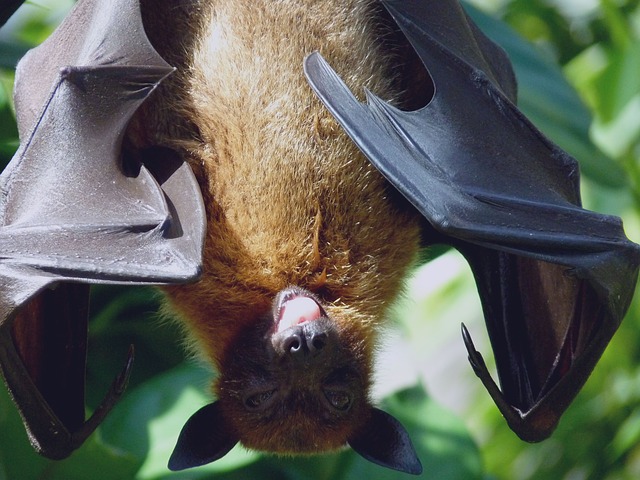It’s a well-known fact that bats use echolocation to find objects. But that’s not all these unique creatures do. Scientists have found that the flying mammals also waggle their heads in order to hear better – something they share in common with pets like cats and dogs.
The study by Melville Wohlgemuth of the University of Maryland says that bats make bobble-head movements unconsciously in an attempt to better listen for prey. The movements allow sound to enter their ears in a special manner, enhancing the sounds they hear in their environment.
Wohlgemuth says the adorable gestures reminded him of his pet pug, and he became curious when he observed the subtle movements in a previous study he had done about bats. He adds,
I wanted to know when bats were doing this and why. It seemed to occur as bats were targeting prey, and that turns out to be the case.
When bats use echolocation, they send out high-frequency sounds and use the echoes to find things around them. Wohlgemuth’s research team used recording machines to study three big brown bats, focusing on when the animals wiggled their ears and wagged their heads.
The results showed that the bats used the movements when hunting, and amazingly enough, synchronized the movements to their sonar sounds, Cosmos reports.
On further research, the team fitted reflectors on the head and ears of the bats and trained them to stay stationery while putting mealworms around them. The recordings showed that the bats waggled their heads approximately once per second, adjusting their ears accordingly as the worms changed directions. Their ears also moved very slightly when the worms came closer.
Cynthia Moss, co-author on the study, says their study can be used to understand similar movements in other animals, such as when a cat twitches its ears, or even in humans. “By studying these movements, we as humans can get insight into how movement helps animals sense their environment,” she says.
Their study can also be applied to neuroscience, in helping develop robots that use sensory systems.
The study was published in PLOS Biology.
























